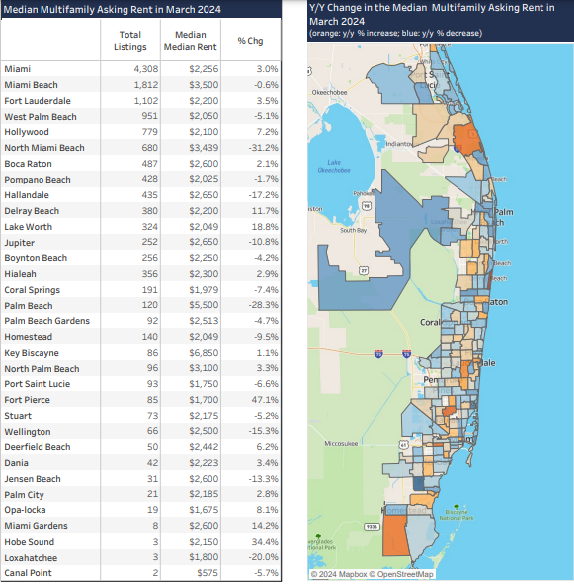1. Incremento en el tiempo de permanencia de las viviendas en el mercado En diciembre de 2024, las viviendas en Miami tuvieron un tiempo de venta promedio de 80 días, superior al de otras grandes ciudades. Este fenómeno se atribuye a los altos costos de vivienda, aunque las propiedades de lujo siguen siendo atractivas para ciertos compradores.
2. Aumento en las ventas de propiedades de lujo Las ventas de viviendas de lujo, especialmente aquellas superiores a $1 millón, han aumentado significativamente. Entre 2019 y 2024, las ventas de viviendas unifamiliares por encima de $1 millón aumentaron en un 140%, mientras que las ventas de propiedades superiores a $10 millones se incrementaron en un 248.4%. Esta tendencia ha elevado el precio medio de las viviendas a $675,000 en diciembre de 2024, un 78% más que en diciembre de 2019.
3. Influencia del Brightline en el mercado inmobiliario La finalización del servicio de tren de alta velocidad Brightline en 2022 ha transformado el mercado inmobiliario en el sur de Florida. Desde su inauguración, las ventas residenciales y el valor de las propiedades cerca de las estaciones de Brightline han experimentado incrementos significativos. Por ejemplo, en Miami, las ventas residenciales aumentaron un 31.9% y el valor de las propiedades se elevó un 131.4% desde 2018.
4. Predicciones para 2025 Se espera que el mercado inmobiliario de Miami continúe su tendencia alcista en 2025. Los precios de las viviendas podrían aumentar alrededor de un 4%, impulsados por una demanda sostenida y la llegada de nuevos compradores, especialmente millennials. Este segmento demográfico está buscando propiedades más pequeñas, lo que podría afectar la disponibilidad y los precios de las viviendas más grandes.
5. Riesgo de burbuja inmobiliaria y áreas recomendadas para inversión A pesar del crecimiento, algunos expertos advierten sobre el riesgo de una burbuja inmobiliaria, especialmente en áreas de alto lujo. Se recomienda centrarse en inversiones en zonas con baja disponibilidad y alta demanda, como Bal Harbour, Miami Beach y Sunset Islands, que podrían ofrecer mayor estabilidad y potencial de revalorización.




